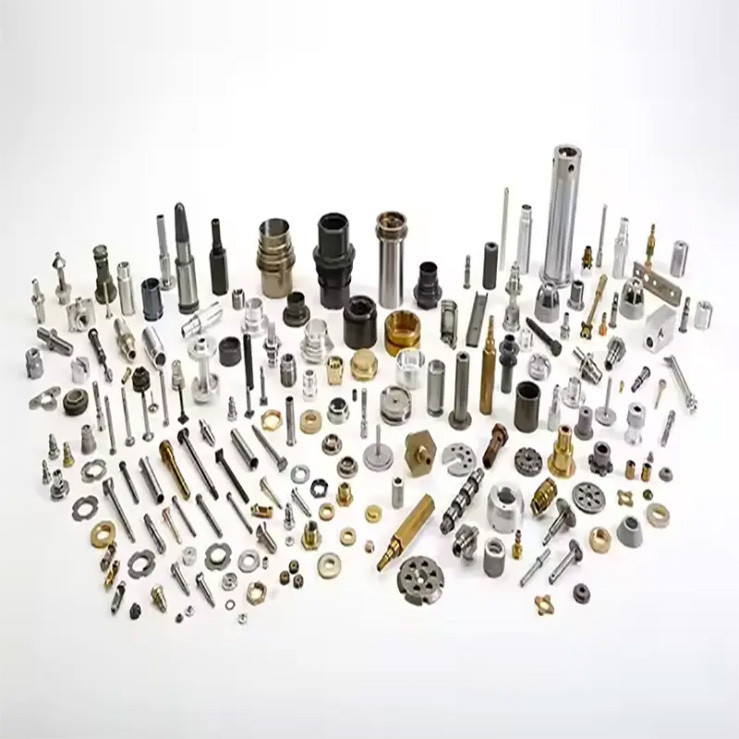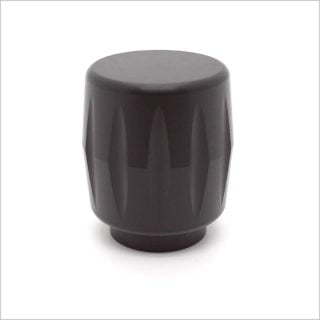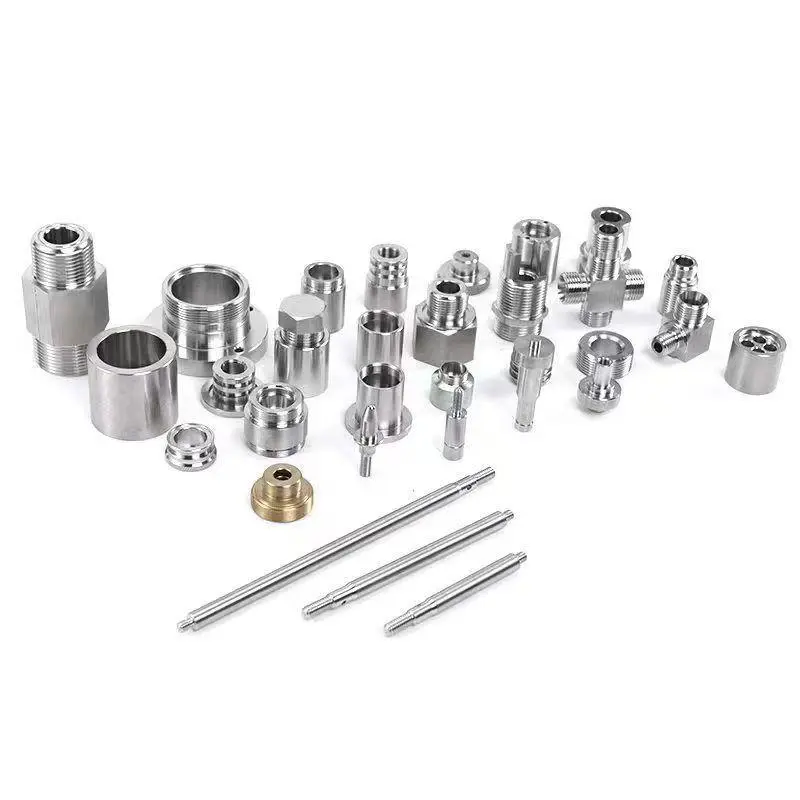Unlock Precision: The Role of CNC Swiss Machining in Stainless Steel Parts
Published Time:
2025-08-21
Unlock Precision: The Role of CNC Swiss Machining in Stainless Steel Parts
Introduction to CNC Swiss Machining
In the evolving landscape of manufacturing, precision and efficiency stand at the forefront. CNC Swiss machining has emerged as a game-changer, particularly for producing high-quality stainless steel parts. This advanced technique not only enhances precision but also significantly improves production speeds, making it a preferred choice for various industries.
What is CNC Swiss Machining?
CNC Swiss machining is a specialized form of computer numerical control (CNC) machining that utilizes a sliding headstock to create intricate parts with exceptional precision. Originally developed for the production of small, precise components, this technique has evolved to accommodate a wide range of materials and part complexities.
The beauty of CNC Swiss machining lies in its ability to produce parts with tight tolerances and detailed features, all while maintaining a high level of efficiency. The process involves feeding a workpiece into a rotating spindle where it is shaped through various cutting tools, allowing for remarkable accuracy and repeatability.
Benefits of CNC Swiss Machining for Stainless Steel Parts
The advantages of using CNC Swiss machining for stainless steel parts are manifold.
1. Superior Precision
One of the standout features of CNC Swiss machining is its unparalleled precision. The automatic tool changes and precise movements ensure that even the most complex designs can be produced with incredible accuracy.
2. Enhanced Production Efficiency
CNC Swiss machines can operate continuously, dramatically increasing production rates. As they can produce multiple parts in one cycle, the efficiency of manufacturing processes is significantly improved.
3. Reduced Waste
With the ability to program exact specifications, CNC Swiss machining minimizes material waste. This is particularly important when working with costly stainless steel materials.
4. Complex Geometries
CNC Swiss machining excels in creating intricate designs that would be difficult or impossible to achieve with traditional machining methods. This capability allows for more innovative product designs.
5. Versatility in Application
Whether it's for medical devices, automotive components, or electronics, CNC Swiss machining can cater to a variety of industries, making it a versatile solution for different manufacturing needs.
Applications of CNC Swiss Machining in Various Industries
The flexibility of CNC Swiss machining makes it suitable for numerous applications. Here are some key industries that benefit from this advanced machining technique.
1. Medical Industry
In the medical field, precision is paramount. CNC Swiss machining is often used to produce surgical instruments, implants, and other critical components that require high levels of accuracy.
2. Aerospace Industry
The aerospace sector demands parts that are both lightweight and incredibly strong. CNC Swiss machining enables manufacturers to create intricate components that meet rigorous safety and performance standards.
3. Automotive Industry
From engine components to custom fittings, the automotive industry relies heavily on CNC Swiss machining to create intricate parts that can withstand the demanding conditions of vehicle operation.
4. Electronics Industry
CNC Swiss machining produces parts for electronic devices, including connectors and housings, where precision and reliability are crucial for performance.
5. Tooling and Fasteners
The production of custom tooling and fasteners is another common application, where the precision of CNC Swiss machining provides a significant advantage in ensuring proper fit and function.
The Process of CNC Swiss Machining Explained
Understanding the CNC Swiss machining process can help demystify how this technology achieves such high levels of precision.
1. Material Preparation
The process begins with selecting the appropriate stainless steel material based on the part specifications. The material is then prepared, often in bar form, for machining.
2. Programming the CNC Machine
Next, engineers program the CNC machine using CAD (Computer-Aided Design) and CAM (Computer-Aided Manufacturing) software. This step involves inputting the exact specifications and tool paths for the desired part.
3. Machining Process
The prepared material is fed into the CNC Swiss machine, where it is clamped and rotated. As the material spins, various cutting tools come into contact with the workpiece to shape it according to the programmed design.
4. Finishing Touches
After the initial machining, additional processes, such as polishing or surface treatment, may be required to achieve the desired finish and enhance the material's properties.
5. Quality Control
Finally, rigorous quality control measures are implemented to ensure that each part meets the specified tolerances and quality standards. This step is crucial in maintaining the integrity of the finished product.
Choosing the Right Stainless Steel Materials for Machining
Selecting the right stainless steel material is critical for the success of CNC Swiss machining. Here are some factors to consider:
1. Strength and Durability
Different grades of stainless steel offer varying levels of strength and corrosion resistance. Choosing the appropriate grade is essential for the part's intended application.
2. Machinability
Certain stainless steel grades are easier to machine than others. Grades like 303 and 316 are commonly used in CNC Swiss machining due to their favorable machinability characteristics.
3. Cost Considerations
While high-quality stainless steel offers durability, it can also be expensive. Evaluating the cost versus performance of different grades is vital for maintaining budget constraints.
Common Challenges in CNC Swiss Machining and Solutions
CNC Swiss machining, like any manufacturing process, presents its own set of challenges. Here, we discuss common issues and potential solutions.
1. Tool Wear and Breakage
Tool wear can lead to decreased precision over time. Regular monitoring and timely tool replacement can mitigate this issue.
2. Material Deformation
Stainless steel can be susceptible to deformation during machining. Using appropriate cutting parameters and cooling fluids helps minimize this risk.
3. Programming Errors
Programming errors can result in defective parts. Thorough testing and simulation of CNC programs prior to running the actual production can reduce this risk.
The Future of CNC Swiss Machining in Manufacturing
As technology continues to advance, the future of CNC Swiss machining looks promising. Innovations in software, materials, and machine capabilities are set to enhance the precision and efficiency of this manufacturing technique.
1. Integration with Automation
The integration of automation and robotics will streamline the machining process, further increasing production rates and reducing labor costs.
2. Advancements in Materials
The development of new stainless steel alloys specifically designed for CNC machining will open doors for even more applications and improved performance.
3. Enhanced Simulation Technologies
As simulation technologies improve, manufacturers will be better equipped to predict machining outcomes, leading to fewer errors and higher-quality products.
Frequently Asked Questions
1. What is the main advantage of CNC Swiss machining over traditional machining?
CNC Swiss machining offers superior precision and the ability to produce complex geometries more efficiently than traditional machining methods.
2. What types of stainless steel are best suited for CNC Swiss machining?
Grades like 303, 316, and 304 are commonly used due to their favorable machinability and corrosion resistance.
3. How fast can CNC Swiss machines operate?
CNC Swiss machines can operate at high speeds, significantly reducing production times compared to conventional machines.
4. Can CNC Swiss machining be used for large parts?
While CNC Swiss machining is primarily designed for small to medium-sized parts, advances in technology are expanding its capabilities to larger components.
5. What industries benefit the most from CNC Swiss machining?
Industries such as medical, aerospace, automotive, and electronics greatly benefit from the precision and efficiency of CNC Swiss machining.
Conclusion
CNC Swiss machining stands out as a revolutionary technique for producing stainless steel parts with unparalleled precision and efficiency. Its benefits, including superior accuracy, enhanced production rates, and versatility in applications, make it an essential process in modern manufacturing. As technology continues to evolve, the future of CNC Swiss machining promises even greater advancements, ensuring that it remains a cornerstone in the production of high-quality components across various industries. By understanding its intricacies and leveraging its capabilities, manufacturers can unlock new levels of precision and innovation in their processes.
NewsCenter
Beijing Pafinal Precision Machinery Co., Ltd.
Email:sales@pafinal.com

Address: No. 239 Huanhe South Road, Tianjin Pilot Free Trade Zone (Airport Economic Zone), Tianjin
sales@pafinal.com:
Whatsapp:
在线客服添加返回顶部
图片alt标题设置: PAFINAL
表单验证提示文本: Content cannot be empty!
循环体没有内容时: Sorry,no matching items were found.
CSS / JS 文件放置地




 2025-09-27
2025-09-27


